It’s typical for a training program to have an easy weekend zone 2 session, a tempo/threshold session on a Tuesday, and perhaps a speed/high intensity interval session on a Thursday in an attempt to target all energy systems.
Although this sounds okay in theory, these sessions target totally different areas of aerobic fitness. It will get you to 70% fitness, but consistently “sharing” the training sessions in a week will eventually lead to a fitness plateau.
The best way to reach peak fitness is to periodise your programming in accordance with your physiological strengths & weaknesses, whilst taking into account when your key race(s) are.
A triathlete who is very strong in the swim and run, but weak on the bike, for example, would benefit most from focusing on improving their bike (where there is 10-20% scope for improvement, instead of perhaps 2-5%).
The same is true for training. There are only 3 ways to improve your aerobic fitness (explained below), and they are targeted in totally different ways. If you want to reach peak performance, each should be focused on at the right time of a program. This might mean 3 long, easy zone 2 sessions in a week, and no tempo/threshold at all.
Let’s take a look at the 3 ways to improve aerobic fitness…
Aerobic Capacity
The majority of endurance events require you to get from a start line to a finish line. The ability to get from point A to point B effectively using the aerobic energy system is called aerobic capacity.
This largely relies on how well you can use oxygen during low to moderate intensities which can be measured in the lab via your Fraction of Expired Oxygen (FeO2). FeO2 is the percentage of oxygen you breathe back out.
At sea level, 21% of the air we breathe is oxygen and on average most athletes breathe back out ~17% of it (meaning they only use 4%). This means the lower the FeO2 % the better because less oxygen is wasted and more is being used in the body. In the lab we see better oxygen use at the same intensity by seeing the FeO2 graph drop down in the early stages of the ramp test.
The below graph highlights Murray’s (age-group Ironman Triathlete) improvement, significantly improving his aerobic capacity by completing specific zone 2 training and leading to a 45min improvement on his Ironman PB time. Notice how the blue graph is significantly lower than the orange for the first two thirds (improved aerobic capacity), before inclining and catching up towards the end (indicating aerobic power is the next area to focus on).
Murray (Triathlete) improved Aerobic Capacity as shown by the drop in FeO2 on the left side of the graph.
Aerobic Power
Once you’ve built the aerobic capacity to finish the race, then you can think about finishing that race faster. This comes down to not just how well you can use oxygen, but how quickly you can you use it at higher intensities. The adaptation is similar to that of aerobic capacity however we are more likely to see the FeO2 flatten off or reduce at the top end as a result of High Intensity Interval Training close to VO2max intensity.
Matt (Runner) was able to improve his aerobic power by flattening off the top end of his FeO2 graph by completing HIIT training near VO2max allowing him to win the 2019 Stawell Gift Hall of Fame Backmarkers Mile (1600m).
Matt (Runner) improved aerobic power by ‘flattening’ off the top end, shifting the graph to the right.
Another example of flattening FeO2 at the top end and improving aerobic power is another Matt (Masters Cyclist), this time for the purpose of dragging his FTP up by 30 watts by focusing not on threshold training, but increasing the size of his aerobic engine to delay the increased contribution from the anaerobic systems and ultimately delaying the onset of fatigue.
Matt (Cyclist) improvement in aerobic power, shifting the graph to the right and dragging his FTP up too.
Lactate Threshold
Once the aerobic engine is built through aerobic capacity and power training, then it becomes more about how much of that engine can you functionally use. This is often referred to in relation to lactate or functional threshold; the theoretical maximum intensity you can sustain for 45-60mins. In the lab, this point is the last point where lactate entry is equal to lactate removal; beyond here there is a rapid increase in lactic acid production which contributes to quick and significant fatigue.
Improving threshold allows you to sustain a higher intensity effort without fatiguing.
You can see over time, Ben’s (age-group Triathlete) engine improved by being able to get further into the test as a result of improved aerobic capacity and power, then high threshold improved as shown by the blood lactate graph shifting to the right, allowing him to sustain a high intensity for longer and use a greater amount of that new aerobic engine.
Ben (Triathlete) improved his threshold by continuously shifting the graph to the right, delaying the onset of fatigue.
In summary, training according to your physiological strengths & weaknesses is the only way to reach your true peak fitness, and the only accurate way to determine these is during lab testing where you can measure oxygen utilisation and blood lactate concentration. We can then figure out whether you should focus on aerobic capacity, aerobic power, or lactate threshold training (or a combination).
If you’re in Victoria and found interest in this article, you may be interested in learning more about VO2 max testing which gives you access to the above information (and much more).




